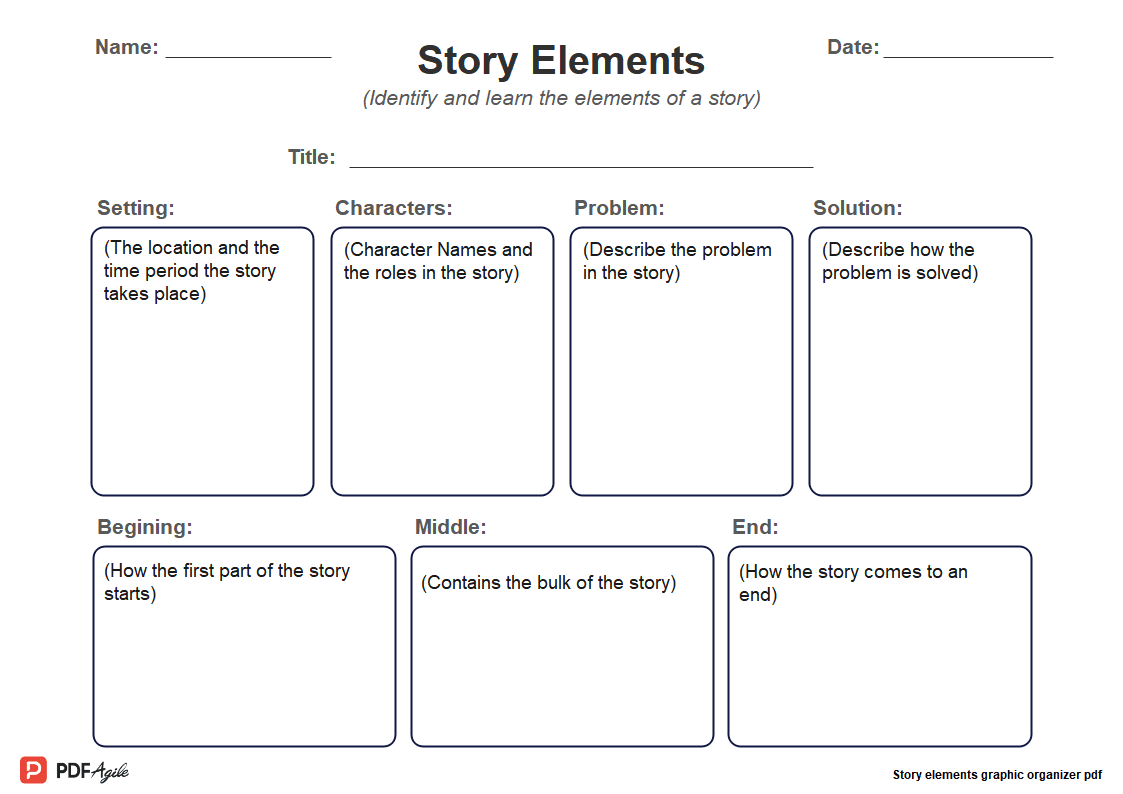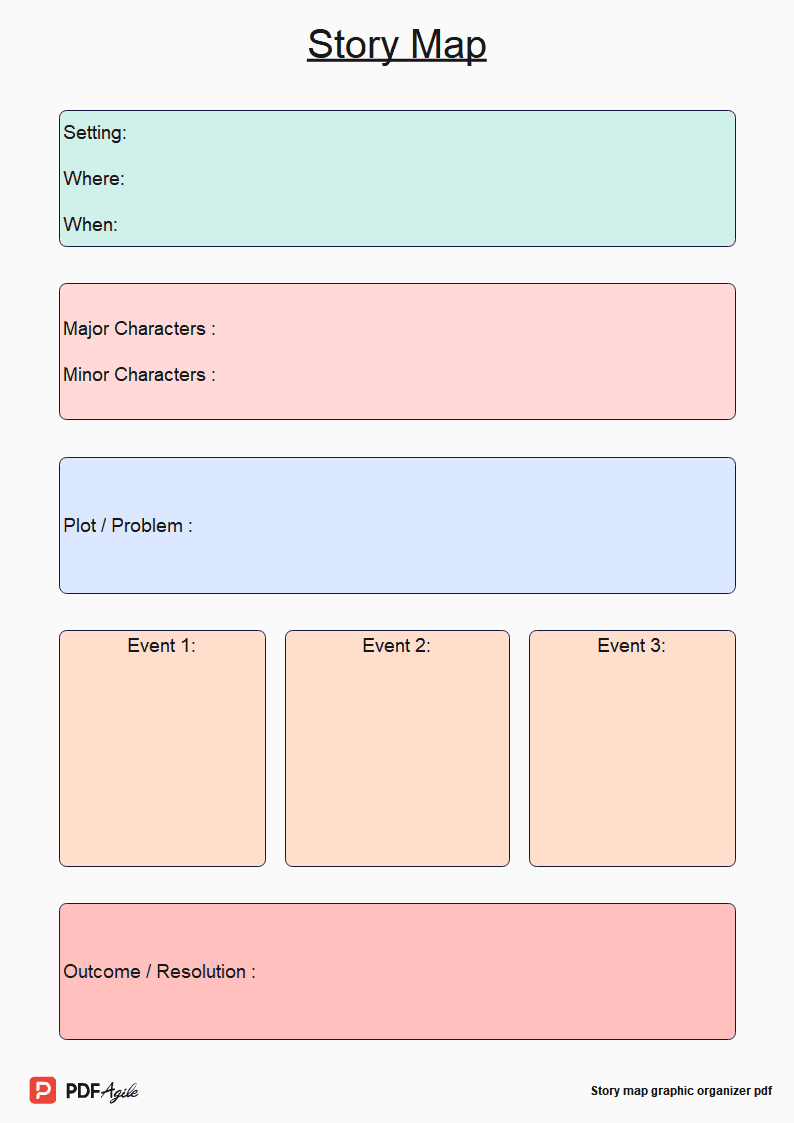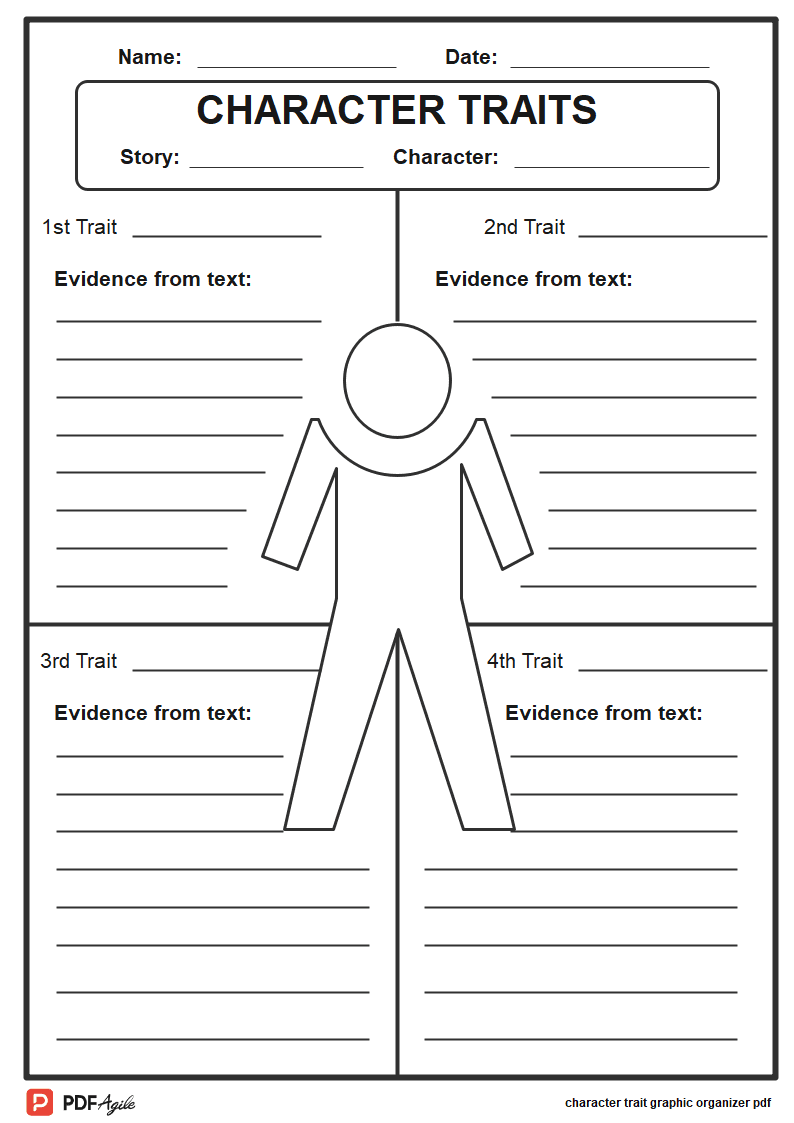Character analysis is a crucial aspect of literary analysis, helping readers understand the motivations, traits, and development of characters in a story. A character analysis graphic organizer is a powerful tool that can enhance this process, providing a structured and visual framework for organizing and analyzing character information.
What is a Character Analysis Graphic Organizer?
A character analysis graphic organizer is a tool that helps you analyze and understand the characters in a literary work. It is a visual representation of the character’s traits, motivations, and development.
Character analysis graphic organizers can vary in format, but they typically include the following sections:
- Physical Appearance: This section describes the character’s physical characteristics, such as their height, weight, hair color, eye color, and clothing.
- Personality Traits: This section lists the character’s positive and negative personality traits. It is helpful to provide specific examples from the text to support your analysis.
- Motivations and Goals: This section explores the character’s motivations and goals. What drives the character to act? What do they want to achieve?
- Relationships with Others: This section examines the character’s relationships with other characters in the story. How do these relationships affect the character’s behavior and development?
- Backstory and History: This section provides information about the character’s backstory and history. What events have shaped the character’s personality and motivations?
- Symbolism and Archetypes: This section analyzes any symbols or archetypes that are associated with the character. How do these symbols and archetypes contribute to the character’s meaning?
- Character Development: This section traces the character’s development throughout the story. How does the character change and grow over time?
- Impact on the Story: This section explores the character’s impact on the story. What role does the character play in the plot and themes of the story?
Character analysis graphic organizers can be used to analyze characters in novels, short stories, plays, poems, and other literary works. They are a valuable tool for students, teachers, and anyone interested in deeply understanding literary characters.
By providing a structured and visual framework, character analysis graphic organizers help you to:
- Organize and record information about the character
- Identify patterns and connections in the character’s development
- Draw conclusions about the character’s personality, motivations, and role in the story
- Enhance your understanding and appreciation of the literary work
Benefits of Using a Character Analysis Graphic Organizer
Character analysis graphic organizers offer a number of benefits for students, teachers, and anyone interested in deeply understanding literary characters. These benefits include:
- Enhanced Understanding: Graphic organizers help you to organize and visualize information about a character, which can lead to a deeper understanding of their personality, motivations, and development.
- Improved Organization: Graphic organizers provide a structured framework for recording your analysis, ensuring that you cover all of the important aspects of the character.
- Facilitated Collaboration: Graphic organizers can be used collaboratively, allowing students or team members to share and discuss their insights on characters.
- Visual Representation: The visual nature of graphic organizers makes it easy to see connections between different aspects of a character’s development.
How to Use a Character Analysis Graphic Organizer?
To use a character analysis graphic organizer, follow these steps:
- Read and Annotate the Text: Begin by reading the text and annotating it with notes on the character’s traits, actions, and relationships. Pay attention to details that reveal the character’s personality, motivations, and development.
- Fill Out the Organizer: Once you have read and annotated the text, fill out the graphic organizer. Be sure to provide specific examples from the text to support your analysis.
- Analyze and Interpret the Information: After you have filled out the graphic organizer, take some time to analyze and interpret the information you have gathered. Identify patterns and connections in the character’s development. Draw conclusions about the character’s personality, motivations, and role in the story.
- Discuss and Share Your Analysis: Share your analysis with others to gain different perspectives and insights on the character. Discuss your findings and engage in critical thinking about the character’s development and significance.
Tips for Using a Character Analysis Graphic Organizer
- Use a different color for each section of the graphic organizer to make it easier to visualize the different aspects of the character’s development.
- Be specific and provide examples from the text to support your analysis.
- Don’t be afraid to revise your analysis as you learn more about the character.
- Use graphic organizers collaboratively to facilitate discussion and share insights with others.
Free Download: Printable Character Analysis Graphic Organizer Template
To help you get started, we have created a free, printable character analysis graphic organizer template. You can download the template by clicking the “Use Template” button on this page.




